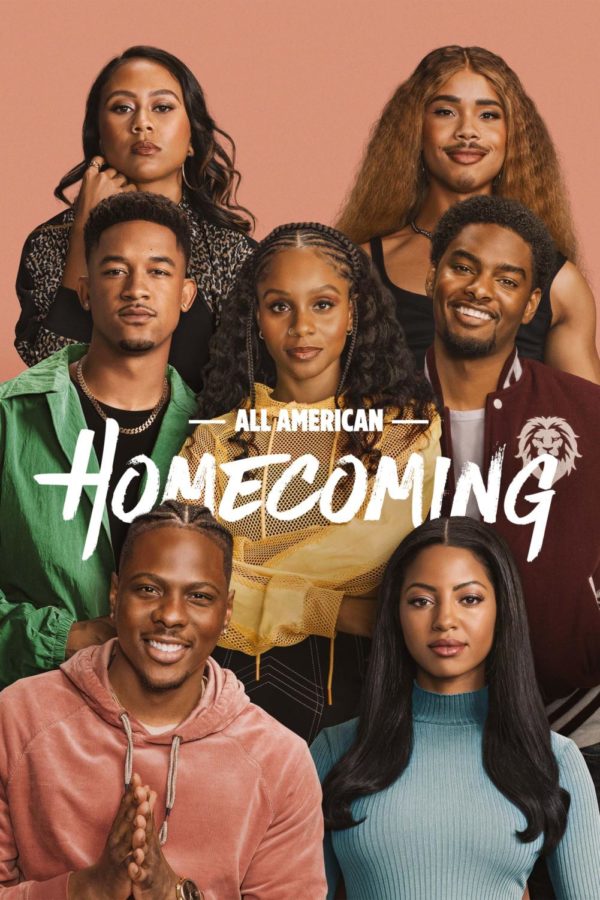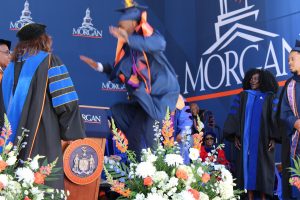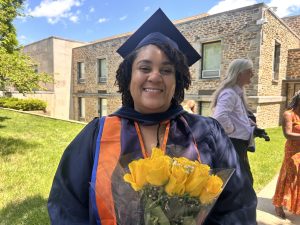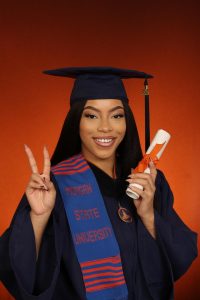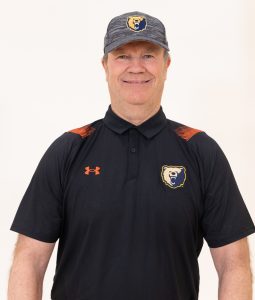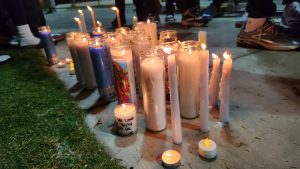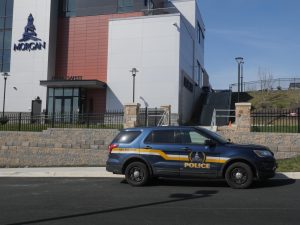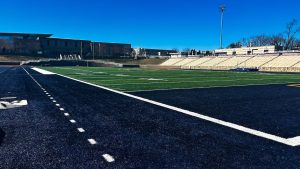Realities of HBCU Life throughout All American: Homecoming
Awaiting a renewal for its third season, the All American: Homecoming cast and showrunners reflect on its portrayal of the lifestyle of HBCU students
March 24, 2023
With two seasons in the books and showrunners hopeful for another, CW’s All American: Homecoming is dedicated to depicting the lifestyle of students at historically Black colleges to the fullest.
Simone Hicks, depicted by actress Geffri Maya, is wrapping up her freshman year of college at a fictional HBCU in Atlanta, Bringston University.
Her first year at her dream HBCU filled the expectations of many college freshmen, like joining Greek life, thriving in academics, and even finding herself in a love triangle.
Maya said she recalls her own college experience as a graduate of Clark Atlanta University while portraying Simone’s character to show the authenticity and realness in growing up as a college student.
“What we see a lot of is Simone being pushed into just young adulthood from her decisions to experiences to her new relationships that she’s building with, even within herself,” Maya said.
Another key component of HBCU life prominently shown throughout All American: Homecoming is the family Simone found when she came to Bringston; spearheaded by her aunt Amara, the president of the university who hosted family dinners with Simone’s friend group in season one.
Kelly Jenrette, who plays Amara Patterson, said the HBCU family’s bond on set continues even after the scenes wrap.
“What you see on the screen is a direct reflection of what happens off screen,” Jenrette said, “We laugh together. We enjoy each other. We have a wonderful time together. So whenever we all get to come together, it’s always just a wonderful time.”
As the only show on mainstream television that highlights HBCUs, the showrunners and cast have worked hard to make sure HBCU culture is depicted most accurately on screen.
In season two Cam Watkin and Simone start their processes to join Greek Life on campus. Cam takes interest in KEK (Kappa Epsilon Kappa) and Simone expresses interest in PKZ (Rho Kappa Zeta.)
JR is the only main character that was already a member of a fraternity, KEK, at the start of the show. The show addresses a lot of common topics surrounding Greek Life like strolling, probates (new member presentations,) and even hazing.
Mitchell Edwards, who plays Cam, said “It’s always a tricky one depicting Greek Life because we all know the special place that has on that on campuses just like you guys…”
The actors depicting parts of Greek Life took time to research organizations so that their portrayals would be most accurate and respectful.
Sylvester Powell, who plays JR, said, “A lot of research, calling people that I know that are in fraternities, calling people that I know that have certain roles in fraternities and just being able to engulf myself in the experience even though me personally, I didn’t pledge.”
Maya elaborated and said that the goal was always to respect Greek Life knowing that it was such an important part of HBCUs culture.
“At the end of the day our goal is to respect the culture of Greek Life, but also respect spaces that we are not involved in. None of us are Greek at all, but there’s a certain level of respect that is necessary, that is mandatory when putting yourself in a position to portray something.”
Although telling the story of Greek Life on HBCU campuses was tricky, Marqui Jackson, one of the showrunners, deems it an important part of HBCU culture that can not go ignored.
“You can’t tell an HBCU story, can’t do a show about HBCUs and not have the storylines about Greek Life. I think you just can’t do that.”
With every effort to display the highs of HBCU life, co-showrunner Marqui Jackson said the show makes an effort to show the unfortunate realities students experience at their schools as well.
Several episodes in the second season showed instances of financial aid issues, racial profiling, and one of the largest topics of all, Bringston University receiving a bomb threat, similar to the multiple threats tens of HBCUs received last year.
“HBCUs as a whole, it’s an amazing experience, but these other things kind of come in and color the experience, like bomb threats,” Jackson said. “It’s just like so many HBCUs that when we saw that last year, I was just like we have to do…we cannot not do an episode about the bomb threats. We are uniquely designed to tell this story unlike any other show on television right now.
The fourth episode, We Shall Not Be Moved, details the students’ and administration’s response to the bomb threat, which Jackson said took a lot of research and conversations in order to accurately depict what that experience was like for the HBCU community.
Along with the bomb threats, All American: Homecoming tackled racial profiling in the thirteenth episode, Lose to Win, as Bringston’s tennis team was stopped by the police during a bus trip, mirroring the reality Delaware State’s lacrosse team faced last year. The stop started as a traffic violation and ended with the students’ bags being checked and escorted off of the bus.
“We really wanted to put these stories out there so that people see that these things happen,” Jackson said. “Like don’t let the new cycle lap you and forget that these things happen to our young people who are just trying to be students and go to school.”
An important part of the story of this season was the mental health center that Coach Marcus and Amara are working to build on campus for students and faculty.
Cory Hardrict, who plays Coach Marcus, expressed how important it is for Black people to have an outlet to express their feelings and deal with issues in a healthy way.
Hardrict said, “When this came about opening the Mental Health Wellness Center, I’m all for that especially character as well because like I said, we need the outlet, and we have to support each other because you never know what someone is going through that it just takes one word that can turn their life over for the better, so I’m all for it.”
In addition to the Mental Health Wellness Center being implemented on the campus of Bringston University, viewers can also expect to see more aspects of HBCU culture being depicted on the show.
Jackson said, “We want to dig more into the arts, especially with Cam and Keisha, kind of really expanding his music journey. I think when we get into season three we’ll see, you know, some progress will be made in terms of what form and style of music, especially being in Atlanta. With Keisha, even though she had the setback with Dr. Pace and she has to go to summer school, her kind of journey with dance, it’s not over.”
After a drama-filled and impactful season, viewers are wondering what’s next for All American: Homecoming. The show’s prequel, All American, has been renewed for a season six, but there has been no news on All American: Homecoming.
Jackson said there has been no update yet on the renewal of All American: Homecoming, but they are hopeful.
“No confirmation yet. We’re still fingers crossed, nothing but prayers. So, hopefully we will come back for another season three. Conversations are being had, but we won’t know until we know. So, we’re just waiting to hear.”
All American: Homecoming has proved to be an important show to viewers because of the story that is being told. After a long time, HBCUs are finally being highlighted in mainstream media. All American: Homecoming is a large part of the much needed representation of HBCUs to younger generations.

